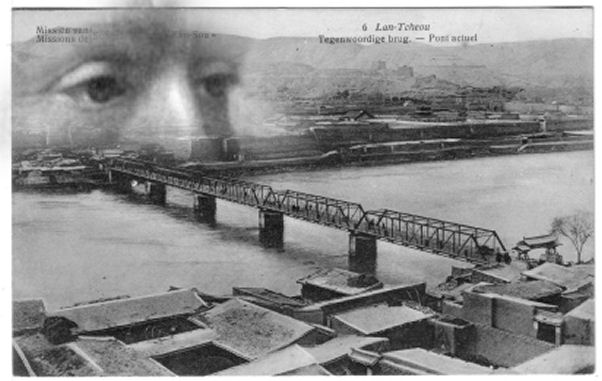
L'OMBRE DE LIN FUCHEN
PLANE-T-ELLE AU-DESSUS DES EAUX JAUNES?

Toute personne possédant des renseignements historiques concernant le pont Zhongshan à Lanzhou (Gansu) est invitée à entrer en rapport avec le webmaster. Les photographies de la première époque, du pont ou des personnages sont bienvenues.
SOMMAIRE HISTORIQUE
Le vieux pont métallique de Lanzhou, chef-lieu de la province du Gansu (République Populaire de Chine), a ceci de particulier qu'il fut le premier pont métallique sur le Fleuve Jaune. Il remplaça un système de pont flottant (dit de Zhenyan) composé de bateaux qui devait être démonté régulièrement et qui coûtait beaucoup de vies humaines.
La construction de cet ouvrage fut projeté pendant des décennies sans qu'il se concrétise jamais. L'arrivée du gouverneur Shen Yun allait déclencher le projet. Il fut confié à des commerçants allemands sur des études effectuées par des américains. Le pont fut inauguré le 19 août 1909.
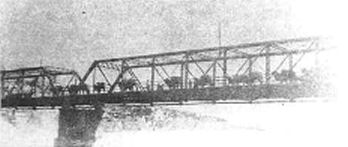
from Frank Keet (Australia)
Il est composé de cinq arches, quatre piliers, fait 233,5 mètres de long et 8,36 mètres de large.
Il a été renforcé à partir des années 1958 par des arcs métalliques que l'on ne voit pas sur les photographies primitives et est conservé comme relique tout en assurant le passage des piétons.
Les ressortissants de la famille Splingaerd sont intéressés par ce pont car il est acquit que Paul Splingaerd en discutait déjà en 1900 avec les autorités, dans le cadre de la mission Fivé. Primitivement le pont était nommé pont Zongtang. Depuis 1928, il a été renommé Pont de Sun Yat-sen.
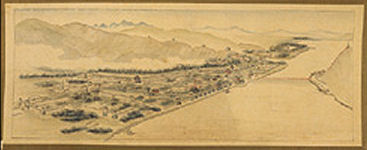
![]()
The old metal bridge of Lanzhou, chief town of the province of Gansu (People's Republic of China), has this of private individual who it was the first metal bridge on the Yellow River. It replaced a system of floating bridge (known as of Zhenyan) composed of boats which was to be dismounted regularly and which cost many human lives. The construction of this work was projected during decades without it being never concretized. The arrival of the governor Shen Yun was going to start the project. It was entrusted to German tradesmen on studies carried out by American. The bridge was inaugurated on August 19, 1909.
It is composed of five arches, makes 233,5 meters of length and 8,36 meters broad. It was reinforced as from the years 1958 by metallic arcs that one does not see on the primitive photographs and is preserved like relic while ensuring the passage of the pedestrians. The nationals of the Splingaerd family are interested by this bridge because it is receipt that Paul Splingaerd discussed it already in 1900 with the authorities, within the framework of the Fivé mission. After his death in 1906, at least one of his sons would have still had a role at the time of the establishment of the bridge in 1908-1909.
Originally the bridge was named Zongtang bridge. Since 1928, it was famous Pont of Sun Yat-Sen.
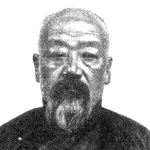
Le gouverneur du Gansu,
Sheng Yun, mandarin de haut niveau viceroy, qui réussit la gageure de faire construire un pont définitif à Lanzhou, avait un passé diplomatique européen qui le porta à utiliser les industriels occidentaux pour sa réalisation, avec un financement chinois.
The gournor of Gansu, Shen Yun, Mandarin high level, which makes a success of the challenge to make build a final bridge with Lanzhou, had a European diplomatic past which carried it to use the Western industrialists for its realization, with a Chinese financing.
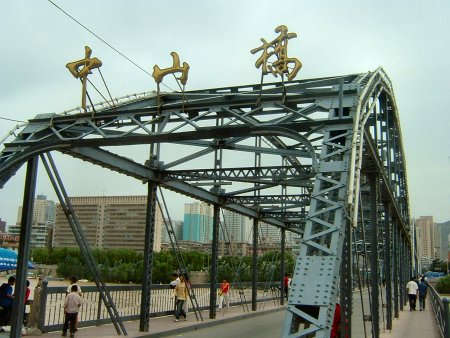
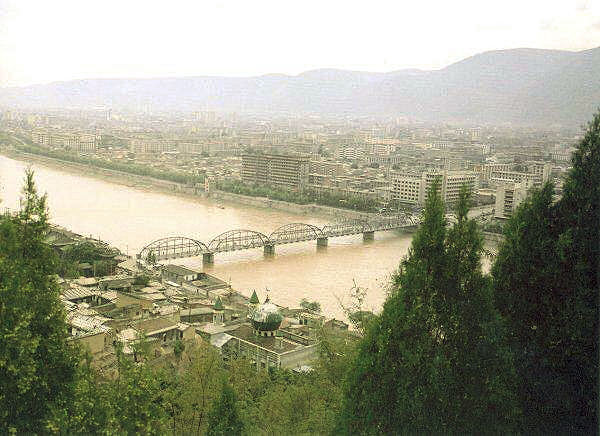
Zongshan Bridge, also called the first bridge over the Yellow River, lies at the foot of Bai Ta Mountain and in front of Jin Cheng Pass in Lanzhou city, the capital of Gansu Province.
Before Zhongshan Bridge was built there were many floating bridges over the Yellow River, but only one existed for a relatively long period. This bridge was called Zhen Yuan Floating Bridge and was made up of more than 20 ships, tied up by ropes and chains. It floated on the river in order to help people pass over, but it was neither solid nor safe enough. Almost every year floods destroyed the bridge or even killed people. Problem also arose in the winter, when ice would build up on the river, so the bridge would have to undergo the costly process of being disassembled and then re-built in the spring. Used for over 500 years, the Zhen Yuan Floating Bridges was finally retired in 1909, when an iron bridge was built. This new bridge is what we call the First Bridge over the Yellow River.
In the year 1907, under the proposal of local officers in Lanzhou and Gansu and the help of a Germany businessman, the Qing Government began to build this first iron bridge over the upper reaches of the Yellow River. All materials, even the rivets, were transported from Germany to China using ships, trains, carts and any other means possible. The bridge was completed in two years, and named 'Lanzhou Iron Bridge over the Yellow River'. In 1942, to commemorate Dr. Sun Yat-sen, the bridge was re-named Zhongshan Bridge (Zhongshan is the Chinese name of Dr. Sun Yat-sen).
The service life of the Zhongshan Bridge expired in 1989, and so about 10 bridges have already been built nearby. Even more bridges are planned to replace the Zhongshan Bridge's work, but none can replace its great value in history or its great work over its 80 years. The Zhongshan Bridge will be remembered forever as a piece of history and a cultural relic.
LE ROLE DES SPLINGAERD DANS LA CONSTRUCTION DU PONT DE LANZHOU
Le rôle exact de Paul Splingaerd dans le projet d'établissement d'un pont sur le fleuve jaune à Lanzhou n'est pas déterminé avec exactitude. Cependant cette participation est établie par deux éléments: le premier repose sur la tradition familiale rapportée par les soeurs Philomène et Hortense Splingaerd, filles d'Alphonse; le seconde repose sur une citation trouvée dans le livre de J. Spae, le biographe de Paul Splingaerd, page 133, dans une partie d'une lettre écrite par Lauweart de Lanzhou, datée du 17 février:
"Paul trekt een loon van 15 000 frank ....Remi trekt 100 dollars per maand.... Ze trachten belast te worden met de bouw van de brug te Lantchou....."
Malgré ces pouparlers, le pont sera construit 9 ans plus tard par des industriels allemands, les accords avec le gouvernement ayant été pris pendant le voyage de Paul Splingaerd en Europe.
Après la mort de son père (1906), Alphonse a certainement eu un rôle d'interprète lors de la construction du pont car on le retrouve sur les feuilles de paye du maître d'oeuvre. Il était à cette époque conseiller auprès du taotaï Peng. En outre, il est présent en place d'honneur lors du banquet que le gouverneur offre à 18 invités qui sont impliqués dans les projets de rénovation urbaine (12/03/1908). On voit Alphonse sur la gauche de Shen Yun, tandis que Mannerheim se trouve sur sa droite. On notera la présence d'au moins 6 autres européens(Coutelier, Coltman, Tysbaert, Scalier, Geerts and Van Dijck) qui forment le début de la colonie belge qui s'établi à Lanzhou.
Carl Gustaf Emil Mannerheim (Villnäs 1867-Lausanne 1951), au moment de cette entrevue, était officier russe. Plus tart, il deviendra Maréchal de Finland et Président de la République de Finland à la fin de la Guerre.
Carl Gustaf Emil Mannerheim (Villnäs 1867-Lausanne 1951), at the time of this interview, was a Russian officer. Later, he will become Maréchal of Finland and President of the Republic of Finland at the end of the War.
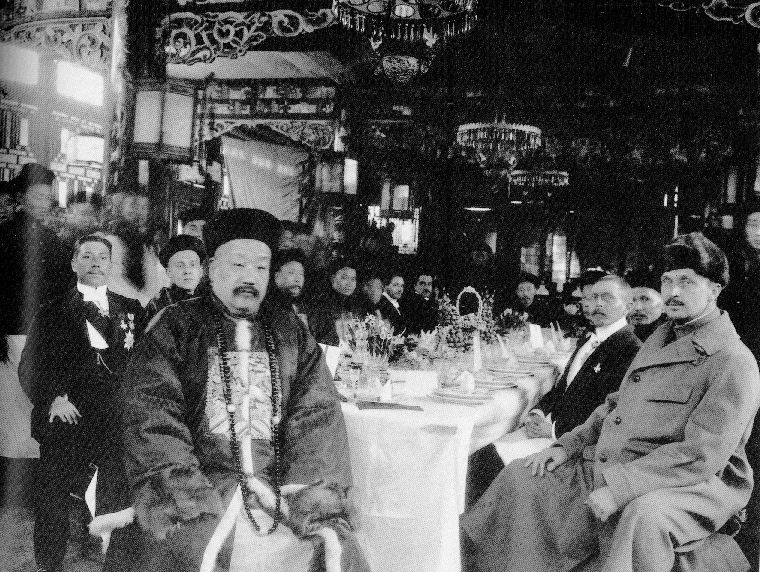
from Anne Splingaerd, Los Angeles
En parenthèses, il faut noter qu'Alphonse Splingaerd fut en relation avec G.E. Morrison puisque on peut les voir ensemble en 1910
Georges Ernest Morrison (1862-1920)
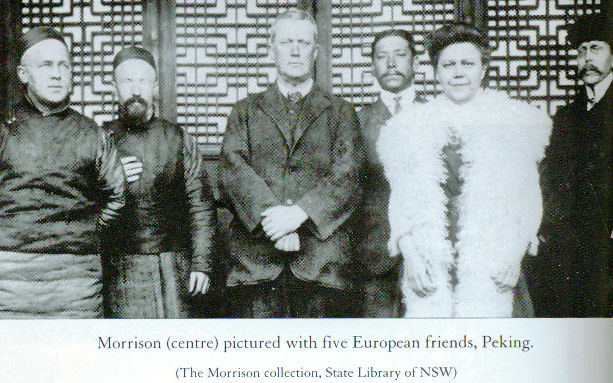
from Anne Splingaerd, Los Angeles
D'après Anne Splingaerd, cette photographie n'aurait pas été prise à Pékin, mais à Lanzhou, étant donné le type de décors. Ici non plus, le rôle d'Alphonse n'est pas défini mais peut-être agissait-il en qualité d'interprête.
On reconnaîtra à gauche Van Dijk, à droite l'ingénieur Geerst, déjà vus sur la photo précédente.
According to Anne Splingaerd, this photography would not have been taken in Beijing, but in Lanzhou, being given the type of decorations. Here either, the role of Alphonse is not defined but perhaps acted it in the capacity as translator.
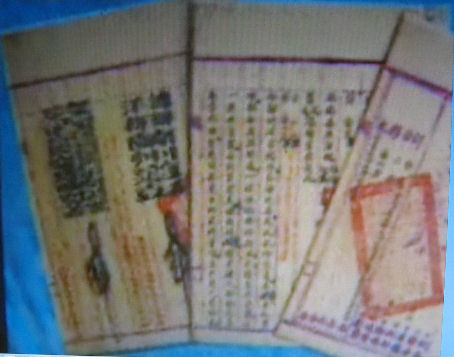
from CCTV.COM
Une partie des contrats de construction du pont de Lanzhou, avec le sceau de l'Empereur.
A part of the contracts of construction of the bridge of Lanzhou, with the seal of the Emperor.
| Pont Sun-Yat-sen: ce que nous disent les historiens Chinois de Lanzhou
Bridge Sun-Yat-sen: what the Chinese historians of Lanzhou say to us (French) |
| Pont Sun-Yat-sen: le contrat 1906
Bridge Sun-Yat-sen: the contract 1906 |
close this window to continue
Christian Goens - La Louvière - Belgium - 2007 - 2008 - tous droits réservés
last update: 03-Jul-2018